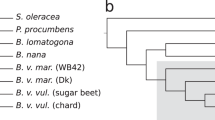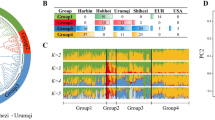Abstract
Crop Wild Relatives (CWR) are an economically important plant genetic resource (PGR) for plant breeding. One strategy to conserve PGR in the natural habitat (in situ) is the genetic reserve technique. This approach protects the existing intraspecific diversity and allows, in contrast to the ex situ approaches, the emergence of new diversity.The genetic reserve conservation technique will be tested in practice with the Genus Beta within the framework of the EU Project “AEGRO”. Beta patula (Ait.) (BP) and Beta vulgaris (L.) maritima (Arcang.) (BVM) are used as models. Both species are important resources for sugar beet breeding. BP is a rare and endangered species with a very limited habitat. In contrast BVM is widespread along the shores of Western Europe. This subspecies is expected to migrate in a northward direction as a consequence of the global climate change. The impact of this migration on the genetic diversity will be examined in future analyses and will establish a basis for future research.A total of 557 plants from 14 sampling plots were analyzed using 25 SSR markers (Simple Sequence Repeat Marker). Additionally, a monitoring database for storing and post processing all laboratory and field data was developed.For the first time the geographic pattern of genetic diversity in the wild beet BP was described and decision criteria for the establishment of a genetic reserve for BP was postulated. The knowledge of geographic patterns of genetic diversity in the wild beet BVM was consolidated as a baseline for further investigations on the potential influence of climate changes and the corresponding geographic range shift on genetic diversity.
Similar content being viewed by others
Article PDF
Author information
Authors and Affiliations
Corresponding author
Rights and permissions
About this article
Cite this article
Enders, M., Frese, L. & Nachtigall, M. Development and application of molecular and bioinformatic tools for the genetic monitoring of wild beets. Nat Prec (2011). https://doi.org/10.1038/npre.2011.5742.1
Received:
Accepted:
Published:
DOI: https://doi.org/10.1038/npre.2011.5742.1



